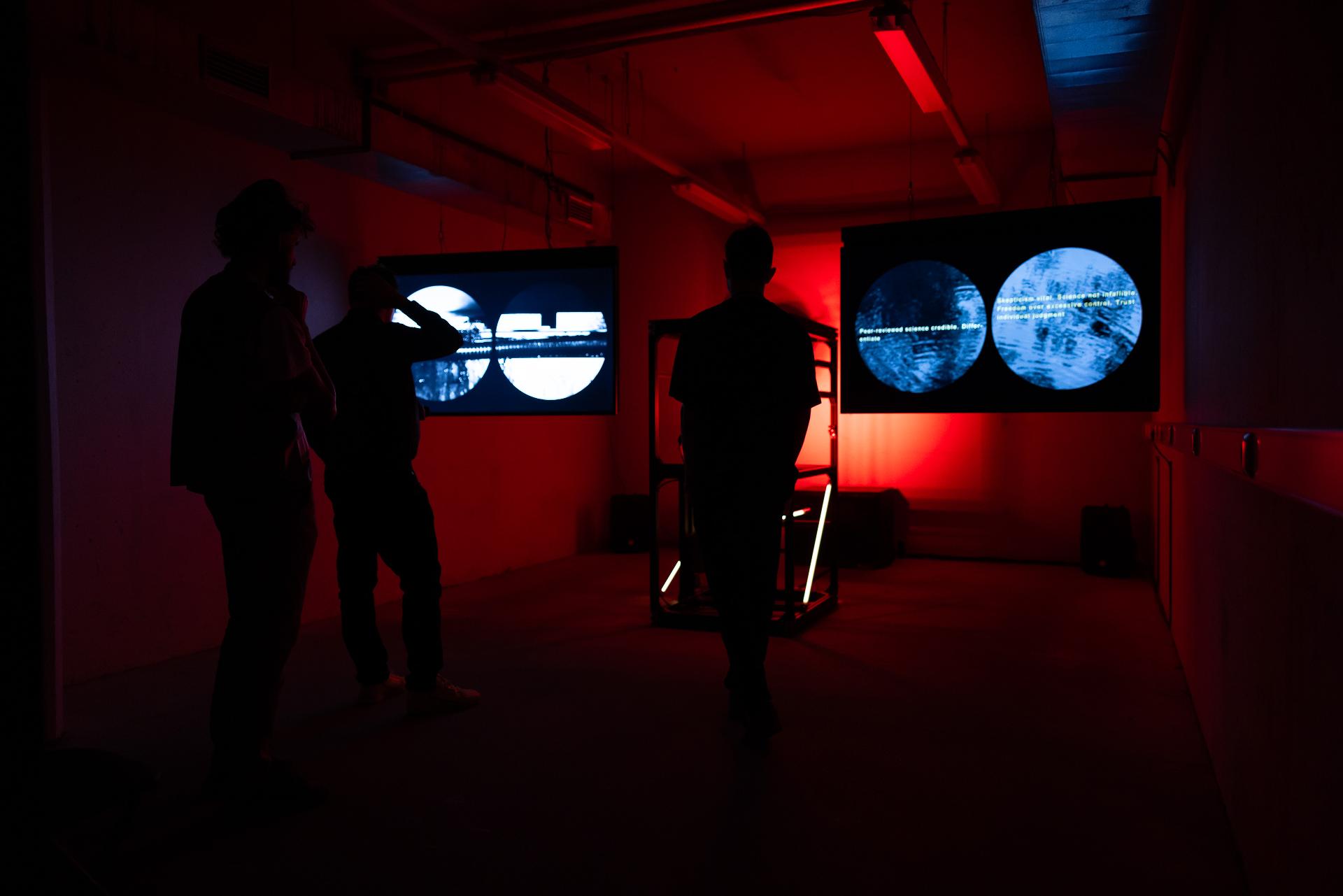Massive Binaries, by British artist based in Barcelona Andy Gracie, will be showcased on June 13th, 14th, and 15th in the projects area of Sónar+D: a forum for debate and an exhibition space where creative technology and cutting-edge art intersect with research, AI-generated visual effects, and experimental video games.
Gracie's installation proposes two overlapping narratives about processes and interactions in binary systems. The first revolves around a pair of neutron stars orbiting each other and eventually merging to generate large amounts of energy, while the second refers to contemporary society, which, unlike neutron stars, seems increasingly polarized. The bridge between the two realms is the use of AI, which, according to the artist, can either enhance or destroy information.
The artwork is the outcome of the first edition of the Randa Art|Science residency organized by the Ramon Llull Institute, developed at Ars Electronica (Linz, Austria), and the Barcelona Institute of Science and Technology (BIST), in collaboration with Barcelona's Art, Science, and Technology Hub Hac Te and the NewArtFoundation. It was showcased at the Ars Electronica festival in September 2023, following Gracie's residency at the Institut de Física d’Altes Energies (IFAE) in Barcelona – one of the centers comprising the BIST Community – where he conducted research on gravitational waves and particle accelerators.
Andy Gracie (London, 1967) is an artist working across various formats and disciplines such as installation, robotics, sound, video, and electronic media. He utilizes scientific theory and practice to question our relationships with exploration and experimentation while highlighting the connection between art and science. His work involves a commitment to space research, cosmology, and time, and includes a continuous examination of semiotics, simulation theory, and/or post-apocalyptic scenarios.








